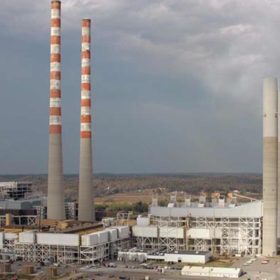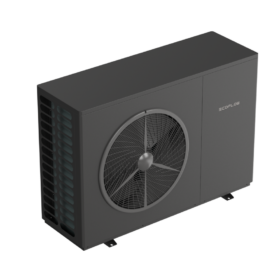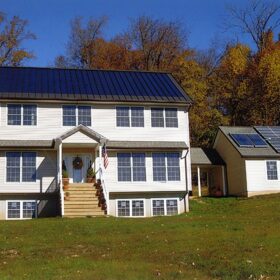California is appropriately named the Golden State, not only due to the gold rush in the 1800s, but because of the limitless possibilities it provides. In recent years, the Golden State shined brightly, with solar at the forefront of its transformational shift to sustainable living. Leading the solar industry in the US, the market grew exponentially, driven by the lucrative incentives available under the previous net energy metering (NEM) regulations – NEM 2.0.
However, in April of this year, NEM 3.0 was put into place bringing with it a drastic change to net metering rates that is projected to make it around 70% less profitable for homeowners to sell excess energy to the grid. Naturally, this has led to some market uncertainty, with concerns about a possible dip in demand.
Leaning on the past to better understand the future
Fortunately for California, this situation is not new. Similar changes have occurred in many other countries across Europe. If energy becomes more expensive to buy than it is profitable to sell, it is more cost-effective to store your energy for personal use when the sun goes down. What you get is a net metering market shifting to a self-consumption market, with solar + storage becoming the norm.
In both Belgium and Germany for example, we saw the same pattern emerge: demand for solar increased significantly in the run-up to the tariff change and then dipped slightly afterwards. However, in both countries this proved to be a blip rather than a trend. In Germany for example, we have seen incredible market growth since net metering ended in January 2021, with 70% of new SolarEdge PV installations now including a home battery (Q1/22 figures), up from 38% prior to net metering ending. This substantial increase in demand for solar + storage installations has made the market very profitable for German installers.
Helping homeowners to prosper in a self-consumption market
With storage presenting a larger, long-term investment, homeowners will look to ensure good value and a system that will last. For installers, the key to maintaining sales is to add as much value for homeowners as possible. This starts by advising homeowners on the help available to reduce the cost of purchasing a solar + storage system. The introduction of the Reduction Act in 2022 brought with it rebates for energy efficiency retrofits of up to $4,000 for single-family homes and up to $400,000 for multifamily buildings, which can help to make a significant dent in the initial purchase price.
Even with this financial help, purchasing a battery may seem out of reach for some homeowners, and so it is essential to offer a range of solutions to meet every budget. Currently, most batteries in the US are purchased in combination with a back-up unit. However, this is not essential for homeowners who are looking to store energy simply to increase their self-consumption. In order to meet this need, we recently introduced ‘Rate Saver’, a storage-only solution which reduces battery system costs for homeowners by up to 38% through reduced equipment and installation costs.
Investing in a solar + storage solution will also be more appealing to homeowners educated on time of use (ToU) savings. Under NEM 3.0, export rates for solar energy will differ from hour to hour, which can make it difficult to determine the revenue homeowners can generate by selling energy back to the grid. On average, homeowners will receive about 5 cents/kWh. The exception is that during September between 6:00pm and 8:00pm the rate will increase to $3/kWh. This means that homeowners could receive a potential paycheck of $750-$850 for September with careful management of the process. Here, product selection is key, as some systems use algorithms which will ensure the battery is automatically fully charged prior to these times, maximizing profitability for homeowners.
Another way to add value for customers is to talk to them about the role that load shifting can play in increasing solar energy self-consumption. For example, scheduling heavier electrical loads such as EV chargers, heat pumps, pool pumps and air conditioners, to run at times when solar production is at its highest, will help customers use much more of the energy produced by their home. This functionality will become even more important because of how EV charging increases the amount of energy required in homes. Therefore, offering a complete end-to-end smart energy management system within the home that automates this process will become a major selling point under NEM 3.0.
Oversizing PV arrays also becomes a more important consideration in a self-consumption market. Oversizing the array (in comparison to the inverter’s AC power) ensures that PV systems produce more power more of the time, even during low light conditions. The result is higher energy yield for the home, and a faster return on investment for the homeowner through greater ToU savings and load shifting.
How installers can thrive in NEM 3.0
For installers to thrive in the new reality of a self-consumption market, they need to consider the battery options available, and the factors which make installing batteries easier for themselves, as well as beneficial to the customer.
A DC-coupled battery provides the highest efficiency energy storage by eliminating what is known as the “triple conversion penalty”, with two less power conversions required than AC-coupled batteries. In some cases, this can result in an additional ten days of saved energy per year. Right now, homeowners are hyper-aware of how much their energy use is costing them, and so it’s easy for them to very quickly calculate how much extra savings this will generate.
However, the benefits of DC-coupled batteries also extend to installers. Unlike AC-coupled batteries, DC batteries do not require additional breakers to be installed in the home’s load center, which in the vast majority of cases removes the need for a main panel upgrade (MPU). MPUs can be expensive for the homeowner and are extremely time consuming for installers. Reducing the time it takes to complete each project means installers can move on to the next one much quicker, which is great news for their bottom line.
Long commissioning times for batteries is another source of frustration for installers. We often hear stories about batteries that can take up to a day to commission because of the time needed to upload firmware to the battery bank. By choosing a battery with wireless communication and an intuitive installer app, commissioning times can be cut to less than one hour. What’s more, commissioning can also be carried out in parallel with installation, rather than as a separate task once the install is completed.
So, will California stay golden?
While there’s no doubt the Californian solar market has undergone a major change, it presents a huge opportunity for installers. As we’ve seen in other self-consumption markets that have experienced a similar shift, sales may dip in the short-term, but this will be followed by a resurgence in demand driven by solar + storage installations. The market that emerges will be more mature, stronger and resilient, and for installers who understand how to best implement batteries into their sales mix, they will be well positioned to become more profitable than ever.
The author Amir Cohen is general manager, solar business unit with SolarEdge.
The views and opinions expressed in this article are the author’s own, and do not necessarily reflect those held by pv magazine.
This content is protected by copyright and may not be reused. If you want to cooperate with us and would like to reuse some of our content, please contact: editors@pv-magazine.com.







NEM 3.0 export rates are below what you make it with home solar so it doesn’t make any sense to export anything to the grid. And you need a lot of battery capacity to save all your excess. Plus batteries only have a 10 year warranty. IMHO it makes no sense to install solar under NEM 3.0.
The people that can afford it will just build a large enough system so that they can just go off grid. If I had a crystal ball, that’s what I would have done. 10 more panels and another powerwall. I then would have been able to thumb my nose at the power company. If they had only reduced it to 50% people would have been more understanding but no they had to take it down to 25%. Thus making people angry and willing to spend a little more and go totally off grid. Power companies don’t care who pays for their services as long as they make a profit. Using the excuse that only people that can’t afford solar will be the ones paying higher rates is a fallacy they have promoted.
The advantages off DC Batteries
Vs
AC. Batteries is NOT Made Crystal Clear
Why?????????